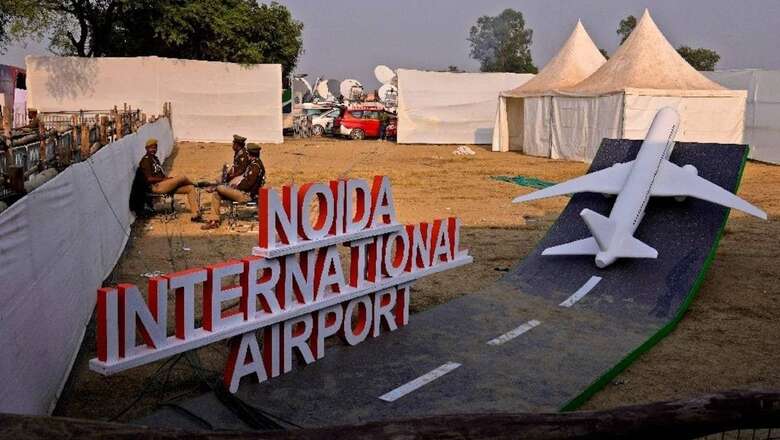
views
The Noida International Airport introduced its official IATA airport code — DXN — during a high-profile press conference in Greater Noida on Wednesday. The location identifier, sanctioned by the International Air Transport Association, or IATA, marks a significant milestone in the airport’s journey to becoming a global aviation hub.
The IATA airport code, often referred to as the IATA location identifier, IATA station code, or simply a location identifier, is a three-letter geocode that distinguishes airports and metropolitan areas across the globe. The IATA, as the defining authority, has granted DXN to the Noida International Airport.
The Noida International Airport, which is coming up at a fast pace, will have commercial flights by the end of 2024, said CEO Christoph Schnellmann. He said multiple airlines have shown interest and test flights will begin in the last quarter of next year.
Schnellmann thanked the Uttar Pradesh government for its support and said the runway work is on at an “aggressive pace”. “We have got our IATA code, DXN. Test flights will take place in the last quarter of 2024 and commercial flights will begin by the end of 2024. Multiple airlines have shown interest,” he said.
The Noida airport will have 28 aircraft stands and aims to cater to 12 million passengers by the end of its first phase, Schnellmann said. He further said there is no competition with the Indira Gandhi International Airport as the country’s air travel numbers are skyrocketing every day.
“Runway work is happening at an aggressive pace. I am extremely grateful to the UP government for all its support. The airport will be expanded to Phase IV, in which the aim is 70 million passenger capacity,” he added.
What is the status of the project?
The Noida International Airport is on track to complete Phase I by the end of 2024. With a northern runway, 28 aircraft stands, and a state-of-the-art terminal, this phase alone is expected to cater to a staggering 12 million passengers annually. This means smoother check-ins, faster security checks, and more efficient boarding processes for travellers. The expansion plans do not end with Phase I. The blueprint envisions a fourth phase, which is slated to accommodate 70 million passengers upon completion over the next 40 years.


















Comments
0 comment